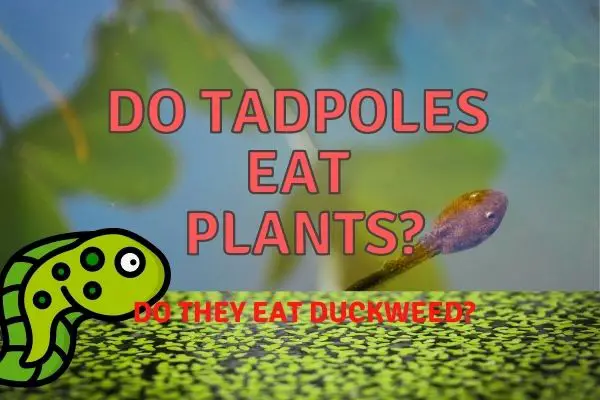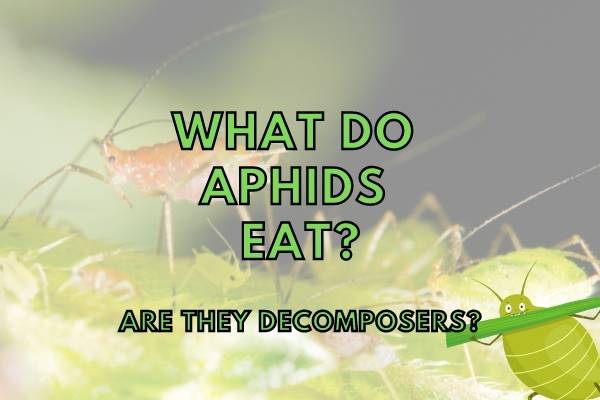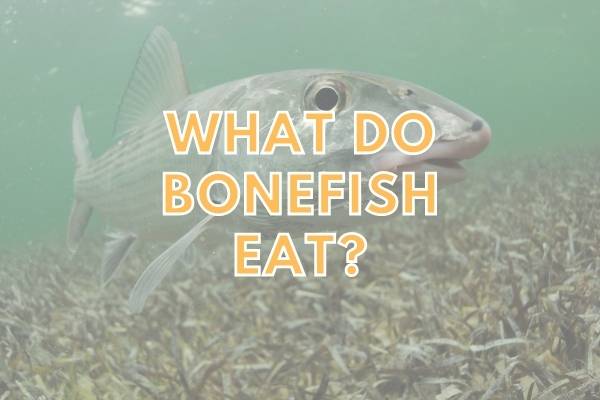Tadpoles are amphibian animals that hatch from eggs and eventually turn into frogs. They live in freshwater where they feed mostly on algae and other microorganisms.
They are herbivores and decomposers, which means that they feed on both living and dead plant and animal matter in the water.
Whereas tadpoles mostly eat microorganisms and smaller animals, they do also occasionally eat decaying duckweed and other water plants. They eat these plants mostly for the layer of bacteria and algae associated with them during their decay as they cannot digest the fibrous plant material itself.
Duckweed is a small flowering plant that covers the surface of freshwater lakes and ponds. It is a free-floating annual aquatic plant that is considered both a weed and a valuable food source for a variety of wildlife species.
Duckweed can be found in ponds, lakes, swamps, and quiet streams.
Tadpoles may eat duckweed in water sources, but it is most important for them because duckweed is a producer plant that feeds microorganisms living in the water when it dies.
It is important to understand that tadpoles, just like frogs, do not have the digestive enzymes to break down fresh plant material.
Therefore they mostly rely on microorganisms to break down the plant material for them and may therefore eat plants covered in bacteria or simply extract the algae and bacteria covering the surface of decaying plant material.
These microorganisms, like bacteria and algae, are extremely important for tadpoles because they provide them with essential nutrients they need to survive through the early developmental stages of their lives.
Duckweed provides five critical nutrients to tadpoles and the microorganism that eat them. These include carbohydrates, proteins, calcium, iron, and carotene.
Algae and bacteria are excellent sources of nutrition for amphibians because it is readily available in the aquatic environment where they live.
When the tadpoles grow into frogs, they are become purely carnivores and are no longer interested in eating duckweed or other aquatic plants.
Contents
Do Tadpoles Eat Elodea?
Yes. Tadpoles may eat decaying elodea and other submerged and floating aquatic plants. Elodea mostly provides food for tadpoles because it helps the microorganism that tadpoles eat to survive because it provides them with the nutrients they need.
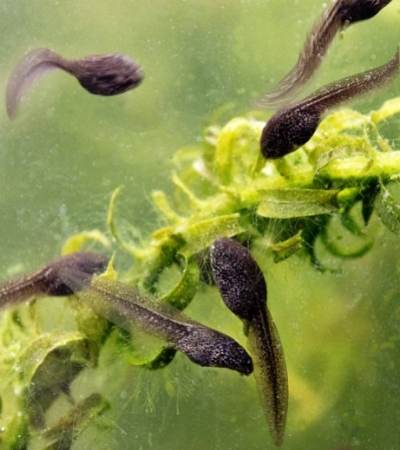
Elodea is a common type of freshwater plant that floats on the surface of the water. It is often used as decoration in aquariums because it forms dense clumps that provide shelter for fish, snails, and aquatic insects.
Elodea breaks down very slowly in ponds and waterways, which means that it provides an excellent source of nutrients for tadpoles. Duckweed is often found growing in the same environment as elodea.
Elodea is rich in proteins, carbohydrates, and lipids. It also contains high concentrations of antioxidants and carotene.
Do Tadpoles Eat String Algae?
Yes, the majority of tadpoles’ diet consists of algae including string algae if available.
String algae are a type of green algae that forms long strands that adhere to submerged surfaces such as rocks.
It can also attach itself to vegetation and other types of floating objects in the water. String algae grow rapidly and provide excellent nutrition for tadpoles.
String algae is an excellent source of nutrition for tadpoles because it is readily available in the aquatic environment where they live. It also contains antioxidants, vitamins A & C, calcium and iron, and essential electrolytes.
Do Tadpoles Eat Grass?
Tadpoles can eat decaying grass that falls into the water, but they will do it to obtain the microorganisms growing on the grass, rather than for the grass itself.
Grass provides microorganisms such as the bacteria that tadpoles eat with essential nutrients they need to survive.
Therefore bacteria will grow on the grass allowing the tadpoles to eat the decaying leaves full of nutritious bacteria, rather than eating the grass that they cannot digest without help from the bacteria.
Do Tadpoles Eat Leaves?
Yes. Tadpoles can eat rotting leaves that are or fall into the water.
Leaves may come from plants on land or those that grow in aquatic environments.
The leaves provide tadpoles with essential nutrients they need to survive until metamorphosis occurs, but they cannot eat them fresh as they do not have the enzymes necessary to digest the lignin and cellulose present in leaves.
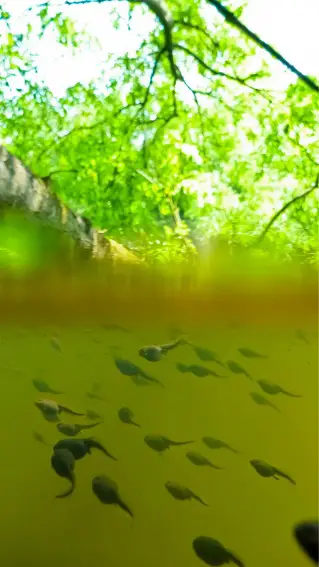
However, the bacteria that decompose leaves are delicious to tadpoles. Tadpoles are more active during the day and often seek towards the light because there is a higher chance of finding algae and fallen leaves etc. on the water surface.
Do Tadpoles Eat Other Pond Plants?
Yes, tadpoles eat other decaying pond plants, including lilies and water hyacinths. Pond plants are an excellent source of nutrition for tadpoles because they provide them with essential nutrients they need to survive until metamorphosis occurs.
Other types of aquatic vegetation that tadpoles will readily consume as decomposers are dead plant material, plankton, and microparticles released from dying trees and roots.
These types of plants are also an excellent source of nutrition for microorganisms that grow on them, which attracts the tadpoles. Sometimes they just eat the layer of algae and bacteria on the plans and leave the rest intact.
What Else Do Tadpoles Eat?
Apart from decomposing plant material with lots of algae and bacteria on it, tadpoles also eat other microscopic organisms found in freshwater.
They can eat smaller animals as well as other organic material, but they cannot really eat larger food items due to their small size!
Therefore, tadpoles mainly eat microorganisms like algae, zooplankton, bacteria, and Euglena as well as tiny worms, insects, and insect or small eggs.
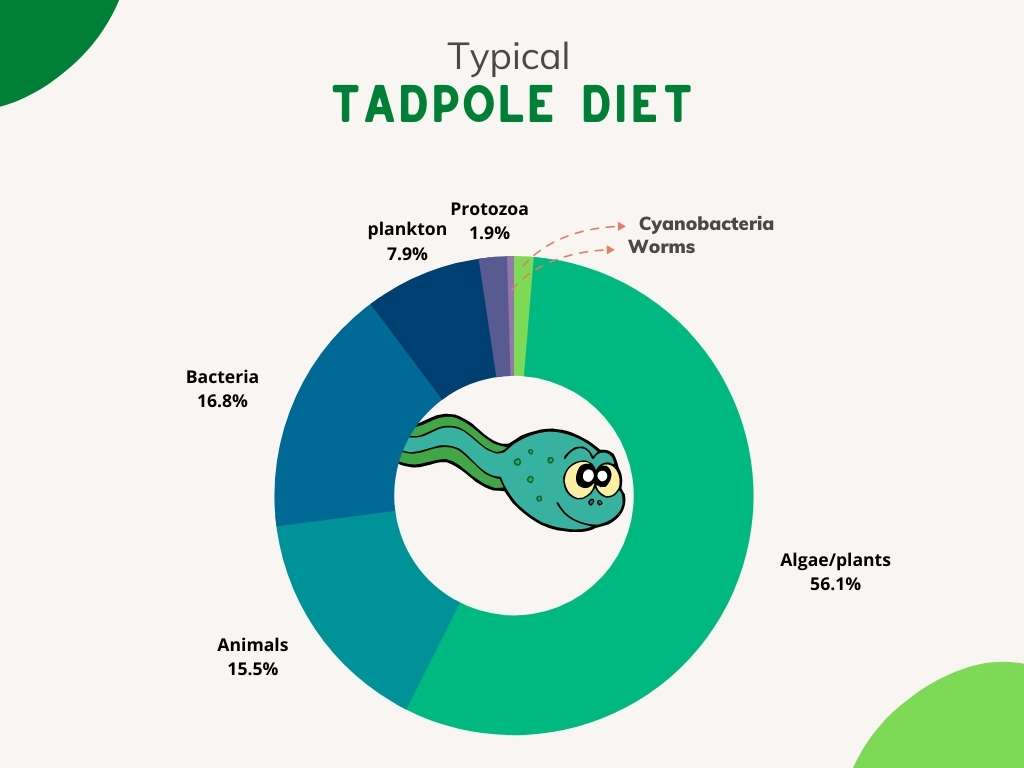
Here is a full list of food items actually found in the stomach of tadpoles:
| Organism name | Percent in diet | Type of organism |
| Spirogyra | 17.98 | Algae |
| Closterium | 16.7 | Bacteria |
| Scenedesmus | 16.07 | Algae |
| Misch. Eggs | 12.46 | Animal |
| Oedogonium | 4.59 | Algae |
| Staurastrum | 3.89 | Algae |
| Euastrum | 3.68 | Algae |
| Pinnularia | 3.45 | plankton |
| Navicula | 3.14 | plankton |
| Staurodesmus | 2.98 | Algae |
| Pediastrum | 2.59 | Algae |
| Euglena | 1.88 | Protozoa |
| Rotifera | 1.54 | Animal |
| Chrococcus | 1.22 | Cyanobacteria |
| Volvox | 1.09 | Algae |
| Dinobryon | 1 | Algae |
| Cosmarium | 0.98 | Algae |
| Zygnema | 0.82 | Algae |
| Asterionella | 0.74 | plankton |
| Calanoida | 0.56 | Animal |
| Nitzchia | 0.49 | plankton |
| Nematoda | 0.45 | Worm |
| Ostracoda | 0.38 | Animal |
| Chironomidae | 0.2 | Insect |
| Cladocera | 0.14 | Animal |
| Acari | 0.08 | Animal |
| Oscillatoria | 0.08 | Cyanobacteria |
| Fish scales | 0.05 | Animal |
| Ancylidae | 0.05 | Snail |
| Amphipoda | 0.01 | Animal |
| Spirulina | 0.01 | Cyanobacteria |
| Other larvae | 0.01 | Worm |
In contrast to adult frogs, tadpoles only live and eat in the water and therefore only have access to the organisms in a freshwater environment.
As they grow into adult frogs, they start to eat more animal matter such as smaller worms, spiders, and all kinds of small insects and insect eggs, such as mosquito eggs, that are laid on the water surface or fall into the water.
Tadpoles may also eat each other in desperation!
If tadpoles are starving for extended periods, they may even feed on each other, effectively becoming cannibals, to secure that at least some individuals survive long enough to develop into frogs and reproduce.
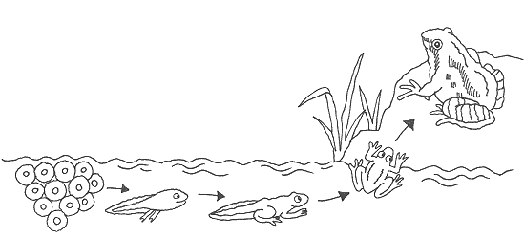
As soon as the tadpole develops into a frog and enters land, they will no longer feed on algae but transit into a purely insect based diet.
Conclusion
Tadpoles consume a variety of microbial life associated with decaying plants found in their aquatic environment, which provide them with the nutrients they need to develop properly into frogs.
When pond plants, such as lilies, water hyacinths, duckweed, and elodea die, they attract microorganisms and algae that are all excellent sources of nutrition for tadpoles.
The types of microorganisms that tadpoles eat will depend on the specific environment they are growing up in where they live.

